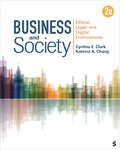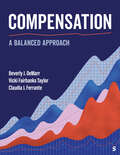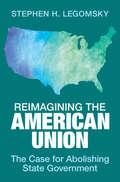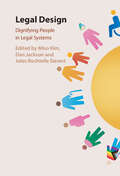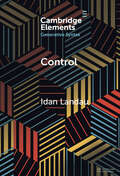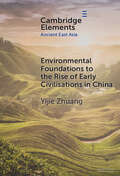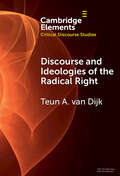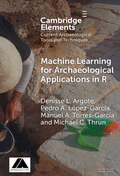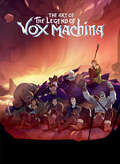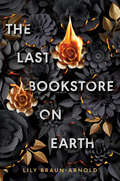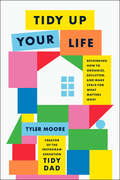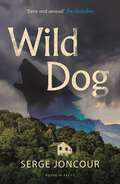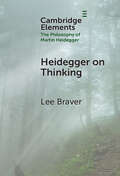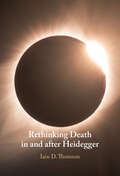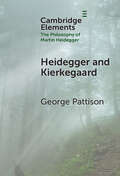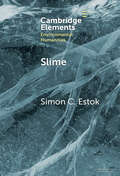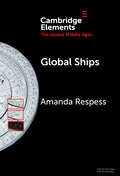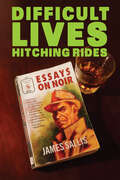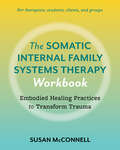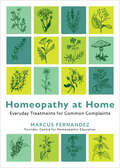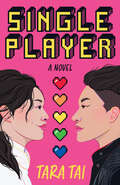- Table View
- List View
Business and Society: Ethical, Legal, and Digital Environments
by Cynthia E. Clark Kabrina K. ChangRecipient of a 2021 Most Promising New Textbook Award from the Textbook & Academic Authors Association (TAA) Business and Society: Ethical, Legal, and Digital Environments, Second Edition prepares students for the modern workplace by exploring the opportunities and challenges that individuals and businesses face in today′s increasingly global and digital world. Authors Cynthia E. Clark and Kabrina K. Chang present unique chapters on social media, big data and hacking, and privacy, diving deeper into the new legal and ethical challenges that are unleashed by our society′s use of and dependence on technology. Real-world case studies, ethical dilemmas, and point-counterpoint debates provide students with hands-on opportunities to apply chapter concepts and develop critical thinking skills as they explore the relationship among businesses, their stakeholders, and their shareholders. The Second Edition includes new cases and expanded coverage of global issues, the future of work, artificial intelligence and consumer rights.
Compensation: A Balanced Approach
by Beverly J. DeMarr Vicki Taylor Claudia J. FerranteCompensation: A Balanced Approach 1e takes an applied approach to covering compensation systems and practices by balancing theory and research with exercises and applications. Each chapter looks at compensation from both the employer and employee perspective, giving students a more holistic understanding of the role total rewards play in an organization. Authors Beverly J. DeMarr, Vicki Fairbanks Taylor, and Claudia J. Ferrante help students develop the ability to think critically and ethically about compensation decisions and their effects on both employers and employees.
Compensation: A Balanced Approach
by Beverly J. DeMarr Vicki Taylor Claudia J. FerranteCompensation: A Balanced Approach 1e takes an applied approach to covering compensation systems and practices by balancing theory and research with exercises and applications. Each chapter looks at compensation from both the employer and employee perspective, giving students a more holistic understanding of the role total rewards play in an organization. Authors Beverly J. DeMarr, Vicki Fairbanks Taylor, and Claudia J. Ferrante help students develop the ability to think critically and ethically about compensation decisions and their effects on both employers and employees.
Reimagining the American Union: The Case for Abolishing State Government
by Stephen H. LegomskyReimagining the American Union challenges readers to imagine an America without state government. No longer a union of arbitrarily constructed states, the country would become a union of its people. The first book ever to argue for abolishing state government in the US, it exposes state government as the root cause of the gravest threats to American democracy. Some of those threats are baked into the Constitution; others are the product of state legislatures abusing their already-constitutionally-outsized powers through gerrymanders, voter suppression schemes, and other less-publicized manipulations that all too often purposefully target African-American and other minority voters. Reimagining the American Union goes on to demonstrate how having three levels of legislative bodies (national, state, and local) – and three levels of taxation, bureaucracy, and regulation – wastes taxpayer money and pointlessly burdens the citizenry. Two levels of government – national and local – would do just fine. After debunking the offsetting benefits typically claimed for state government, the book concludes with a portrait of what a new, unitary American republic might look like.
Legal Design: Dignifying People in Legal Systems
by Dan Jackson Miso Kim Jules Rochielle SievertLegal design is a rapidly growing field that seeks to improve the legal system's accessibility, usability, and effectiveness through human-centered design methods and principles. This book provides a comprehensive introduction to legal design, covering fundamental concepts, definitions, and theories. Chapters explore the role of legal design in promoting dignity, equity, and justice in the legal system. Contributors present a range of community-driven projects and method-focused case studies that demonstrate the potential of legal design to transform how people experience the law. This book is an essential resource for anyone interested in the future of law and the intersection of design and justice.
Control (Elements in Generative Syntax)
by Idan LandauThis Elements presents the major findings and theoretical advances in the area of Control. We describe the different types of control (complement, adjunct, obligatory, nonobligatory) and illustrate their profiles in several languages. It is shown that while certain features of Obligatory Control (OC) are common – nullness of PRO, nonfinite complements – they are not universal, hence should not enter its core definition. Comparing approaches to the choice of controller based on lexical meaning postulates with those based on embedding of speech acts, we conclude that the latter provide deeper insights into the core properties of OC. The fundamental semantic distinction between clauses denoting a property and those denoting a proposition proves to be important: It affects both the possibility of Partial Control in complements and the possibility of Non Obligatory Control in adjuncts. These insights are integrated in the Two-Tiered Theory of Control, laid out in the final sections.
Environmental Foundations to the Rise of Early Civilisations in China (Elements in Ancient East Asia)
by Yijie ZhuangThe transition from the middle to late Holocene (5000–4000 BP) coincided with profound socioeconomic transformations and intensified regional and trans-regional interactions in late prehistoric China. These environmental and socioeconomic changes gave rise to diverse lifeways and settlement modes that constituted the foundation for the emergence of regional civilisations. In this Element, prehistoric China is divided roughly into the Highlands, Lowlands, and Coastal areas, each with unique environmental and ecological conditions and distinctive technological and economic traditions between 5000–4000 BP. The author gathers and reviews large amounts of environmental and archaeological data, and reconstructs brief environmental and settlement changes and lifeways. The author argues that environmental conditions and subsistence adaptations are two of the engines driving the increased socioeconomic complexity and rise of civilisations in the late prehistoric China. This title is also available as Open Access on Cambridge Core.
Discourse and Ideologies of the Radical Right (Elements in Critical Discourse Studies)
by Teun A. van DijkThere has been much scholarly attention for the radical right, especially in political science. Unfortunately, this research pays less attention to the discourse of the radical right, a topic especially studied by scholars in discourse studies. Especially lacking in this research in various disciplines is a theoretically based analysis of ideology. This Element first summarizes the authors theory of ideology and extends it with a new element needed to account for the ideological clusters of political parties. Then a systematic analysis is presented of the discourses and ideologies of radical right parties in Chile, Spain, the Netherlands and Sweden. From a comparative perspective it is concluded that radical right discourse and ideologies adapt to the economic, cultural, sociopolitical and historical contexts of each country.
Machine Learning for Archaeological Applications in R (Elements in Current Archaeological Tools and Techniques)
by Denisse L. Argote Michael C. Thrun Pedro A. López-García Manuel A. Torres-GarcíaThis Element highlights the employment within archaeology of classification methods developed in the field of chemometrics, artificial intelligence, and Bayesian statistics. These run in both high- and low-dimensional environments and often have better results than traditional methods. Instead of a theoretical approach, it provides examples of how to apply these methods to real data using lithic and ceramic archaeological materials as case studies. A detailed explanation of how to process data in R (The R Project for Statistical Computing), as well as the respective code, are also provided.
The Heart Healthy Plant-Based Cookbook: Over 100 Recipes for Lowering Blood Pressure, Reversing Heart Disease & Cardiac Recovery
by Hari Pulapaka Jenneffer PulapakaDiscover the ultimate guide to heart health with The Heart Healthy Plant-Based Cookbook.Unlock the secrets to a healthier heart with over 100 easy, oil-free, and salt-free recipes designed not only to prevent and reverse heart disease but also to tantalize your taste buds with delicious flavors.Written by lifestyle medicine expert Dr. Jenneffer Pulapaka and professional chef Hari Pulapaka, The Heart Healthy Plant-Based Cookbook combines culinary expertise with medical knowledge to create an essential collection of recipes so flavorful, it's almost impossible to tell they're good for you.Why Choose a Plant-Based Diet?Heart disease remains the leading cause of death in the US. Research shows that a plant-based, low-sodium, low-fat, oil-free diet, combined with regular exercise, not only reduces the risk of heart disease but is also crucial for recovery. Embrace a healthier lifestyle with recipes that support heart health and overall well-being.What's Inside The Heart Healthy Plant-Based Cookbook:• Breakfast, Lunch, Dinner, and Dessert Recipes: Start your day with Blueberry and Oats Pancakes or enjoy a hearty Sweet Potato, Kale, and Mushroom Scramble. Savor a Roasted Vegetable Tikka Masala Curry for dinner or indulge in a Green Chile and Corn Chowder.• Pantry Staples and Special Seasoning Blends: Stock your kitchen with essential ingredients and unique seasoning blends to enhance your meals.• Soups and Sauces: Warm up with Rapini, Garlic, and White Bean Soup or try the Plantain and Lima Bean Mofongo.• Healthy Eating Habits: Learn key habits for a healthier heart with our comprehensive primer.Transform your diet and improve your heart health with The Heart Healthy Plant-Based Cookbook. Order your copy today and start your journey to a healthier, happier you!
The Art of The Legend of Vox Machina
by Meredith KecskemetyThe adventure begins in the hit TV series The Legend of Vox Machina! Follow Vex&’halia, Vax&’lidan, Keyleth, Grog Strongjaw, Scanlan Shorthalt, Pike Trickfoot, and Percy de Rolo as they set off to save Exandria from dark forces.Experience Exandria again with character breakdowns, concept art, and a behind-the-scenes look into the creation of the show with Legend of Vox Machina writer Meredith Kecskemety, along with special commentary from the cast.
The Last Bookstore on Earth
by Lily Braun-ArnoldTwo teen girls fall in love and fight for survival in an abandoned bookstore weeks before another cataclysmic storm threatens to bring about the end of the world in this unforgettable YA debut. Perfect for fans of Station Eleven and The Last of Us.&“A thoroughly original, intimate, and sometimes harrowing meditation on survival, forgiveness, and learning how to love again at the almost end of the world.&”—Nicola Yoon #1 New York Times bestselling author The world is about to end. Again.Ever since the first Storm wreaked havoc on civilization as we know it, seventeen-year-old Liz Flannery has been holed up in an abandoned bookstore in suburban New Jersey where she used to work, trading books for supplies with the few remaining survivors. It&’s the one place left that feels safe to her.Until she learns that another earth-shattering Storm is coming . . . and everything changes.Enter Maeve, a prickly and potentially dangerous out-of-towner who breaks into the bookstore looking for shelter one night. Though the two girls are immediately at odds, Maeve has what Liz needs—the skills to repair the dilapidated store before the next climate disaster strikes—and Liz reluctantly agrees to let her stay.As the girls grow closer and undeniable feelings spring up between them, they realize that they face greater threats than the impending Storm. And when Maeve&’s secrets and Liz&’s inner demons come back to haunt them both, they find themselves fighting for their lives as their world crumbles around them.&“A hauntingly beautiful story of love, loss, and the raw fight for survival.&” —Jarrod Shusterman, New York Times bestselling author of Dry&“Hopeful, thrilling, and twisty…the snarky sapphic dystopian of our dreams.&” —Jennifer Dugan, author of Some Girls Do
Tidy Up Your Life: Rethinking How to Organize, Declutter, and Make Space for What Matters Most
by Tyler MooreBring order to your home and focus to your busy life with Tidy Dad&’s guiding principles and practical routines for organizing, cleaning, and prioritizing—both emotionally and physically.A father of three with a stressful job, Tyler Moore felt his life resembled an overstuffed closet: disorganized and overly busy behind tidy, closed doors. When it all became too much—for his family's 750-square-foot apartment and his mental health—he set out to unpack the physical and emotional mess around him.Chronicling his progress as &“Tidy Dad&” on Instagram, Moore learned that tidying is about so much more than the aesthetics and decluttering of a physical space. When he stepped back, reflected, and named what was "just enough," he was able to devise systems and hacks that brought order to his whole life. Drawing on Moore's experience with the everyday highs and lows of parenting, home management, and work-life balance, and filled with his signature warmth and wit, Tidy Up Your Life includes: Tidy Dad&’s process for tackling overwhelming tasks—how to identify what really matters both emotionally and physically to you and the people who share your space. How to arrive at your own definition of "just enough" as well as thought experiments for appreciating what you already have.The goal is not "always tidy" but "easily tidied" and other principles for lifting some of the mental and physical burdens we feel when managing our homes. Tips for making a &“one-area-a-weekday&” cleaning schedule and other simple routines that compliment household rhythms and reduce the mental load you may be carrying.A vital book for overwhelmed parents as well as overworked, stressed-out professionals, Tidy Up Your Life will help you live a more joyful, tidied-up life.
Wild Dog: Sinister and savage psychological thriller
by Serge JoncourFranck and Lise, a Parisian couple in the film industry, rent a cottage in the quiet hills of the French Lot, with no phone signal, to get away from the stresses of modern life. A mysterious dog emerges, looking for a new master. Ghosts of a dark past run wild. They meet a German lion tamer, who took refuge during the First World War . . .Faced with nature at its most brutal, the holiday-makers are about to discover that man and beast have more in common than they think.
Anti-Systemic Movements
by Giovanni Arrighi Terence K. Hopkins Immanuel WallersteinBuilding on an analysis of the dissenting movements to have emerged since the rise of modern capitalism, Anti-Systemic Movements uncovers an international groundswell of resistance still vitally active at the end of the twentieth century. The authors suggest that the new assertiveness of the South, the development of class struggle in the East and the emergence of rainbow coalitions in various regions hold fresh promise for emancipatory politics. Taking the year 1968 as a symbolic turning point, the authors argue that new anti-systemic movements have arisen which challenge the logic of the capitalist world-system.
Heidegger on Thinking (Elements in the Philosophy of Martin Heidegger)
by Lee BraverEvery philosophy is a celebration of the fact that being can be thought, that the world around us yields to concepts that join together into arguments which can lead us to new thoughts and new ways of thinking. Heidegger's great talent was to never lose his philosophical wonder at philosophy, to never stop thinking about thinking. Heidegger's early work favors a somewhat pragmatic view of thinking as organized by and around our projects, emphasizing tacit skills over articulate conscious thinking. It also explores stepping back from all projects in dread and wonder. His later thinking is reciprocal rather than autonomous, something we do with and for being instead of something we do to or on beings, which can help overcome contemporary nihilism. After the death of God, we may no longer be able to pray to a divinity, but we can still be the thinkers of being.
There Will Be the Devil to Pay: Central Bankers, Uncertainty and Sensemaking in the European Financial Crisis of 1931 (Studies in Macroeconomic History)
by Per H. HansenThe European financial crisis of 1931 was a pivotal moment in the economic and financial history of the twentieth century. Based on extensive archival research and a cultural conceptual framework, There Will be the Devil To Pay offers a new and much needed understanding of the European financial crisis. It tells the dramatic story of the five months that led to the breakdown of the gold standard, writing the history of the crisis from the perspective of central bankers, private bankers, and government officials. It provides a new narrative of how those involved struggled to understand and respond to the crisis as it unfolded. Contributing to the emerging literature on radical uncertainty and narrative economics, this book provides a detailed analysis of how decision-makers confront uncertainty and shape narratives that create actionable knowledge and enable decision-making.
Rethinking Death in and after Heidegger
by Iain D. ThomsonIain D. Thomson is renowned for radically rethinking Heidegger's views on metaphysics, technology, education, art, and history, and in this book, he presents a compelling rereading of Heidegger's important and influential understanding of existential death. Thomson lucidly explains how Heidegger's phenomenology of existential death led directly to the insights which forced him to abandon Being and Time's guiding pursuit of a fundamental ontology, and thus how his early, pro-metaphysical work gave way to his later efforts to do justice to being in its real phenomenological richness and complexity. He also examines and clarifies the often abstruse responses to Heidegger's rethinking of death in Levinas, Derrida, Agamben, Beauvoir, and others, explaining the enduring significance of this work for ongoing efforts to think clearly about death, mortality, education, and politics. The result is a powerful and illuminating study of Heidegger's understanding of existential death and its enduring importance for philosophy and life.
Heidegger and Kierkegaard (Elements in the Philosophy of Martin Heidegger)
by George PattisonThe work examines the presence and significance of Kierkegaard in Heidegger's work. After setting out the context of Heidegger's reception of the Danish thinker and examining his likely knowledge of his writings, the work first examines key Kierkegaardian concepts that are explicitly present in Being and Time, including existence, 'idle talk' (Gerede), anxiety, the moment of vision, repetition, and the existential significance of death. It is seen that Heidegger regarded Kierkegaard as an essentially religious writer whose work was only indirectly relevant to Heidegger's own project of fundamental ontology. Subsequently, the work considers the place of Kierkegaard in Heidegger's writings from the 1930s onwards, concluding with consideration of the paper Heidegger submitted for the 1963 Paris UNESCO conference marking the 150th anniversary of Kierkegaard's thought.
Slime: An Elemental Imaginary (Elements in Environmental Humanities)
by Simon C. EstokSlime has always stirred the imagination and evoked strong responses. It is as central to life and growth as to death, degeneration, and rot. Slime heals and cures; it also infects and kills. Slime titillates and terrifies. It fascinates children and is the horror in stories and the disgusting in fridges. Slime is part of good sex. Slime is also worryingly on the rise in the warming oceans. Engaging with slime is becoming more urgent because of its proliferation both in the seas and in our imaginations. Inextricable from racism, homophobia, sexism, and ecophobia, slime is the least theorized element and is indeed traditionally not even included among the elements. Things need to change. Addressing growing climate issues and honestly confronting matters associated with them depend to a very large degree on theorizing and thus understanding how people have thought and continue to think about slime.
Global Ships: Seafaring, Shipwrecks, and Boatbuilding in the Global Middle Ages (Elements in the Global Middle Ages)
by Amanda RespessGlobal Ships examines the major seafaring traditions and technologies that engendered long-distance connections across the world's oceans during the Global Middle Ages. Between the years 500–1500 CE, maritime trade networks spanning the seas globalized commodities, religions, and trade diasporas in an increasingly mobile world. Focusing on shipbuilding traditions, nautical cultures, sailing itineraries, and examples of recovered shipwrecks and cargoes from around the world, Global Ships provides an expert overview of the major vessels that sailed the seas in the Global Middle Ages. A concise interpretive guide to global maritime technologies and cultures for researchers, teachers, and students, Global Ships highlights essential historical context, technological case studies, and logics of seafaring around the world before the modern age.
Difficult Lives Hitching Rides
by James SallisJames Sallis's (Drive) seminal biographical essays on crime fiction pioneers Jim Thompson, David Goodis, and Chester Himes restored to print and joined by a handpicked collection of essays, reviews, and introductory writings on noir fiction.At the time of its original publication by Gryphon Books in 1993, Difficult Lives was a pioneering work of literary investigation. Sallis's subjects of Himes, Goodis, and Thompson were as enigmatic as they were out-of-print, and literary scholarship on the subject of their lives and works scant. As the title of the collection indicates, the three men led difficult lives, and although they forever changed the history of crime writing, they all passed in relative isolation.The literary detective work Sallis did then has been built upon since but rarely with the same poetry and authorial sympathy. Despite there now existing several works of academic and popular biography on each writer Sallis's novella-length biographies retain the sense of the newly uncovered.Those three pieces, "Jim Thompson: Dime-store Dosteoevski," "David Goodis: Life in Black and White," and "Chester Himes: America's Black Heartland" are prefigured by a new introduction by the author as well as the original introduction, "Portable Worlds: The First Paperback Novel." Following Difficult Lives is collection of reviews, essays and introductions, selected by Sallis, covering a wide range of crime fiction's most legendary authors and books: Derek Raymond, Jean-Patrick Manchette, Boris Vian, Patricia Highsmith, James Lee Burke, George Pelecanos, Paco Taibo, Shirley Jackson, and more.
The Somatic Internal Family Systems Therapy Workbook: Embodied Healing Practices to Transform Trauma--For therapists, students, clients, and groups
by Susan McConnellThe companion workbook to Somatic Internal Family Systems Therapy—a practical guide to the 5 pillars of embodied IFS for trauma therapists, Somatic Experiencing™ practitioners, and mental health healersWith embodied exercises, foundational knowledge, and practical guidance, The Somatic Internal Family Systems Therapy Workbook shows therapists and clinicians how to embody the five practices of Somatic IFS: somatic awareness, conscious breathing, radical resonance, mindful movement and attuned touch.Each works together to facilitate trauma healing with clients and build embodied safety, integrate unresolved harm, and develop the ability to name, process, and understand emotional and somatic sensations. The workbook opens by inviting the therapist to explore their own Internal System, offering an embodied approach to experiencing the model. Chapter 1 explores and explains foundational concepts like somatics; embodiment; Parts; Self; and the cultural influences that shape and shift our embodied experiences. Chapters 2 - 6 move into theoretical grounding, clinical applications, and practical exercises for each of the five principles. They offer tools to:Develop clients' ability to name, describe, and convey sensationsRecognize and track for signs of client overwhelmWork with Parts that fear body awarenessUnderstand the purpose and clinical benefits of conscious breathingRestore the Embodied Self Explore therapeutic shifts from doing to to being with clientsHeal attachment woundsIntegrate mindful movement into healing developmental traumaUnderstand and practice attuned touchEach practice is designed to be used whenever it will be of benefit: the tools and exercises are non-linear and adaptable, and aren&’t limited by a prescriptive sequence. The workbook also explores links between current psychotherapeutic practice and ancient healing modalities, grounding SIFS in a larger web of effective somatic trauma healing and embodiment approaches.
Homeopathy at Home: Everyday Treatments for Common Complaints
by Marcus FernandezYour health is in your hands with this easy guide to homeopathy, offering expert, actionable wisdom to help you take control of your wellbeing.Discover how to treat everyday acute issues confidently and safely using homeopathic remedies at home. By matching the characteristic symptoms of common complaints with the correct homeopathic treatment, you can unlock your body&’s incredible natural ability to heal.This guide offers a comprehensive A–Z of homeopathic remedies for a wide range of complaints – from common colds, coughs, allergies and infections, to cuts, bruises, acne and PMS. It also provides useful substitutions that can easily be found in your kitchen or garden – so you&’ll always have a natural remedy to hand.With this book, you&’ll have everything you need to address everyday health issues naturally and effectively.
Single Player: A Novel
by Tara TaiTwo video game creators go head-to-head in this delightful, queer enemies-to-lovers workplace romance debut, perfect for fans of TJ Alexander and Helen Hoang.Cat Li cares about two things: video games and swoony romances. The former means there hasn't been much of the latter in her (real) life, but when she lands her dream job writing the love storylines for Compass Hollow—the next big thing in games—she knows it&’s all been worth it. Then she meets her boss: the infamous Andi Zhang, who&’s not only an arrogant hater of happily-ever-afters determined to keep Cat from doing her job but also impossibly, annoyingly hot.As Compass Hollow&’s narrative director, Andi couldn&’t care less about love—in-game or out. After getting doxxed by internet trolls three years ago, Andi&’s been trying to prove to the gaming world that they&’re a serious gamedev. Their plan includes writing the best game possible, with zero lovey-dovey stuff. That is, until the man funding the game&’s development insists Andi add romance in order to make the story &“more appealing to female gamers.&”Forced to give Cat a chance, Andi begrudgingly realizes there&’s more to Cat than romantic idealism and, okay, a cute smile. But admitting that would mean giving up the single-player life that has kept their heart safe for years. And when Cat uncovers a behind-the-scenes plot to destroy Andi&’s career, the two will have to put their differences aside and find a way to work together before it&’s game over.
